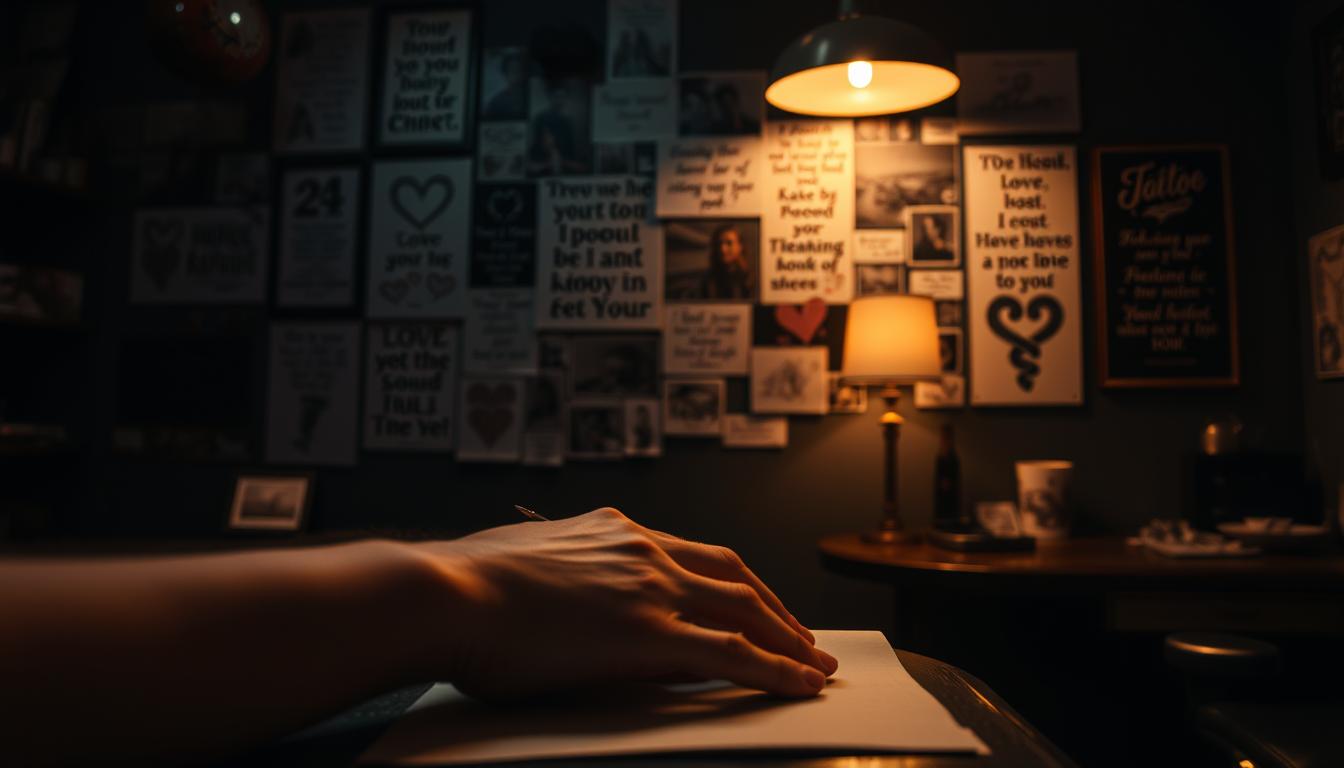
What drives millions to permanently embrace ink on their skin—and when did body art shift from taboo to triumph? In the 1800s, tattoos marked outsiders. Today, they’re celebrated as personal masterpieces. Nearly 4 in 10 adults aged 18–29 now wear at least one, proving this cultural phenomenon is far more than a fleeting trend.
You might wonder what fuels this lasting connection to body art. Is it rebellion, artistry, or something deeper? Modern motivations blend history with individuality. From honoring loved ones to reclaiming self-expression, every design tells a story.
This exploration digs into the psychology, culture, and artistry behind ink. You’ll uncover how societal views evolved and why permanent markings resonate across generations. Prepare to see tattoos not as mere decorations but as windows into identity.
Key Takeaways
- Tattoos transitioned from symbols of rebellion to mainstream acceptance in modern culture.
- 38% of adults aged 18–29 have at least one tattoo, reflecting its widespread popularity.
- Motivations range from personal milestones to artistic self-expression.
- Body art often carries emotional, cultural, or spiritual significance.
- Understanding tattoo culture requires exploring historical shifts and psychological drivers.
The Evolution of Tattoos and Cultural Shifts
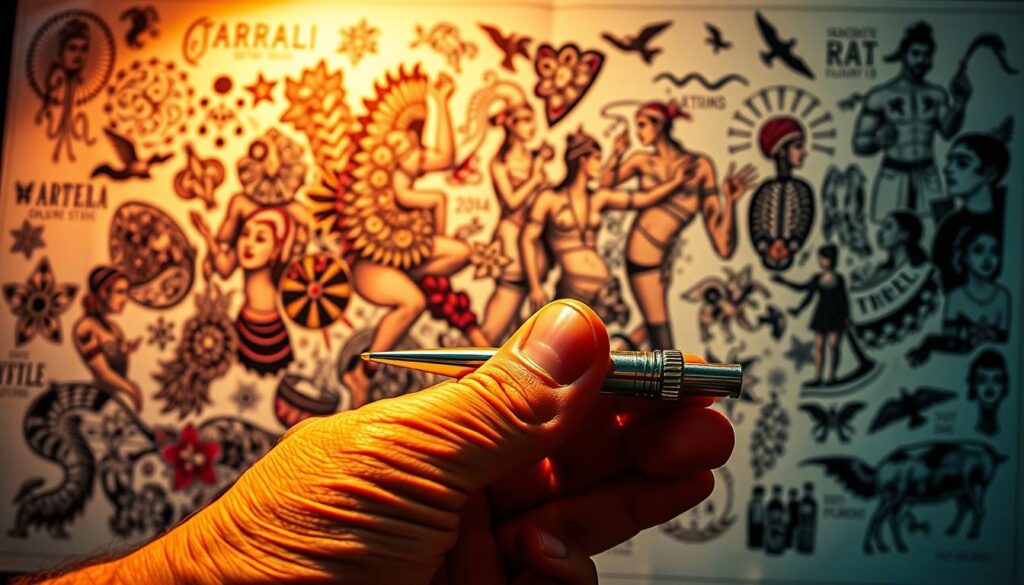
Imagine walking into a courtroom where visible ink could land you in jail. That was reality in 19th-century America, where body art signaled criminality rather than creativity. Over two centuries, tattoos transformed from societal red flags to celebrated symbols of identity.
Historical Perspectives from the 1800s to Today
In the Victorian era, tattoos marked sailors, prisoners, and circus performers. By the 1950s, they became rebellious badges for counterculture movements. Fast-forward to today, and 42% of millennials sport at least one design—a stark contrast to their great-grandparents’ generation.
| Era | Perception | Social Impact |
|---|---|---|
| 1800s | Criminal association | Exclusion from mainstream society |
| Mid-1900s | Rebellious subcultures | Growing youth adoption |
| 2020s | Artistic self-expression | Common in workplaces |
Changing Cultural Perceptions and Acceptance
You’ll now see teachers with sleeve tattoos and CEOs with discreet wrist designs. This shift mirrors society’s embrace of individuality over conformity. Cultural icons like Rihanna and Dwayne Johnson proudly display ink, normalizing body art across generations.
Older skepticism lingers in some circles, but 78% of Americans under 40 view tattoos as socially acceptable. The transformation reflects our evolving values: personal autonomy now outweighs outdated judgments about appearance.
The Psychology Behind Tattoos
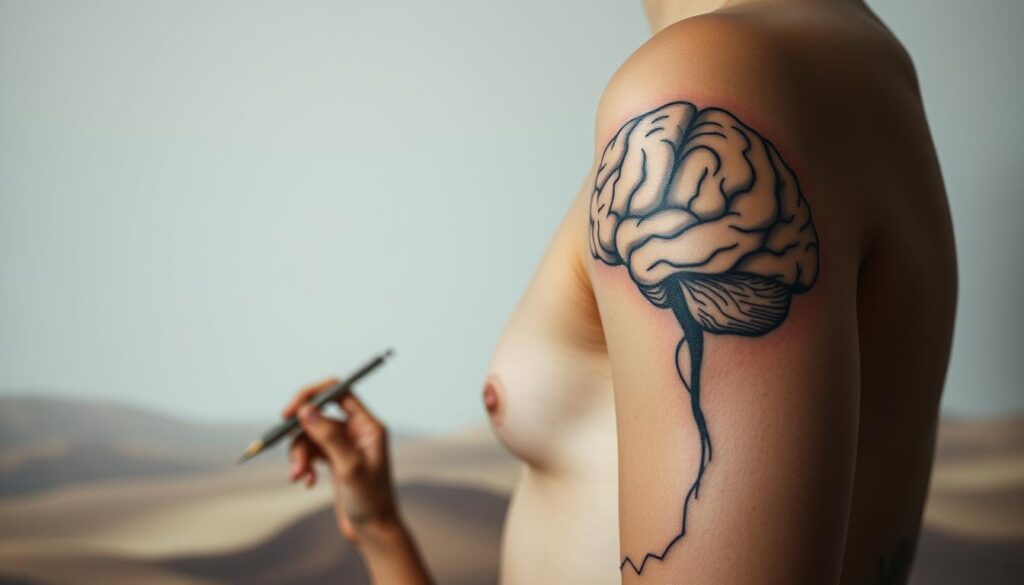
Modern research reveals that choosing body art involves more than just style—it’s a mental map. Psychologist Luzelle Naudé’s study of college students shows how tattoo decisions reflect complex emotional journeys rather than fleeting trends. Nearly 60% of participants linked their ink to significant life events, proving skin becomes a canvas for deeper psychological processes.
Expressions of Identity and Personal Growth
Your tattoo might symbolize overcoming addiction, celebrating sobriety, or honoring a lost loved one. These permanent marks often act as visual milestones, transforming abstract emotions into tangible art. One survivor’s phoenix design, for instance, can represent rising from trauma’s ashes.
Control plays a vital role here. Choosing where and what to ink helps reclaim autonomy after experiences that left you feeling powerless. It’s why 43% of tattooed individuals in therapy report improved self-esteem post-procedure.
Understanding the Mental Health Connection
The needle’s sting triggers endorphins—natural painkillers that create a brief emotional lift. This biochemical reaction explains why some describe sessions as “therapy with ink.” While temporary, it offers respite for those battling anxiety or depression.
| Psychological Benefit | % Reporting Improvement | Common Design Themes |
|---|---|---|
| Emotional Stability | 68% | Symbols of strength |
| Identity Reinforcement | 72% | Cultural motifs |
| Trauma Recovery | 54% | Memorial imagery |
Healing parallels emerge physically and mentally. Caring for fresh ink teaches patience—a skill transferable to managing mental health challenges. Over time, both the visible art and internal growth become sources of pride.
Why Do People Get Tattoos? Uncovering the Personal Reasons
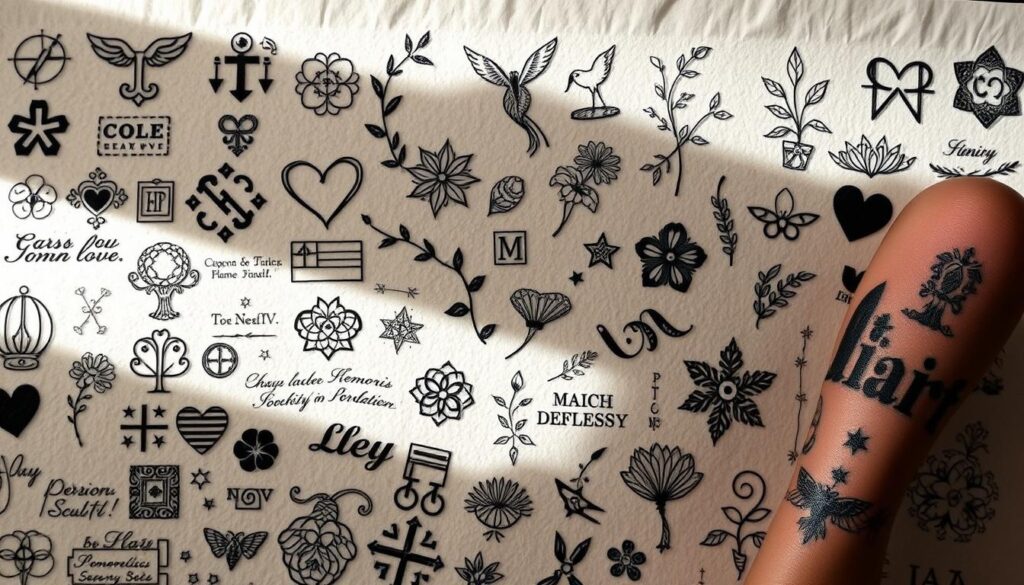
Skin becomes a living scrapbook for millions, etching life’s peaks and valleys in permanent ink. Nearly 1 in 4 individuals choose body art to commemorate pivotal moments, transforming skin into a canvas of resilience and remembrance.
Commemorating Life Events and Loved Ones
Twenty-five percent of inked individuals report deeply personal reasons for their designs. A grieving daughter’s floral sleeve whispers “to keep my mother’s memory,” while a father’s wrist script honors his firstborn child. These marks aren’t decorations – they’re emotional landmarks.
Body art helps process complex experiences. Cancer survivors often ink phoenixes rising from ashes. Military veterans might choose service dates alongside fallen comrades’ names. One participant described their collection as “a story written in scars and symbols,” revealing how skin becomes autobiographical.
| Motivations | Percentage | Example Symbols |
|---|---|---|
| Honoring Loved Ones | 38% | Birth flowers, initials |
| Celebrating Milestones | 27% | Wedding dates, graduation years |
| Overcoming Challenges | 35% | Semicolons, mountain peaks |
Cultural roots also shape these story-driven designs. A second-generation immigrant might blend ancestral patterns with modern artistry. Others use tribal motifs to reconnect with heritage. Every mark serves as both personal tribute and public declaration.
This way of carrying memories creates lasting comfort. A widow’s hummingbird tattoo isn’t just art – it’s a daily reminder of her partner’s favorite saying. Through ink, abstract emotions gain tangible form, turning bodies into evolving histories.
Tattoos as a Form of Self-Expression and Art
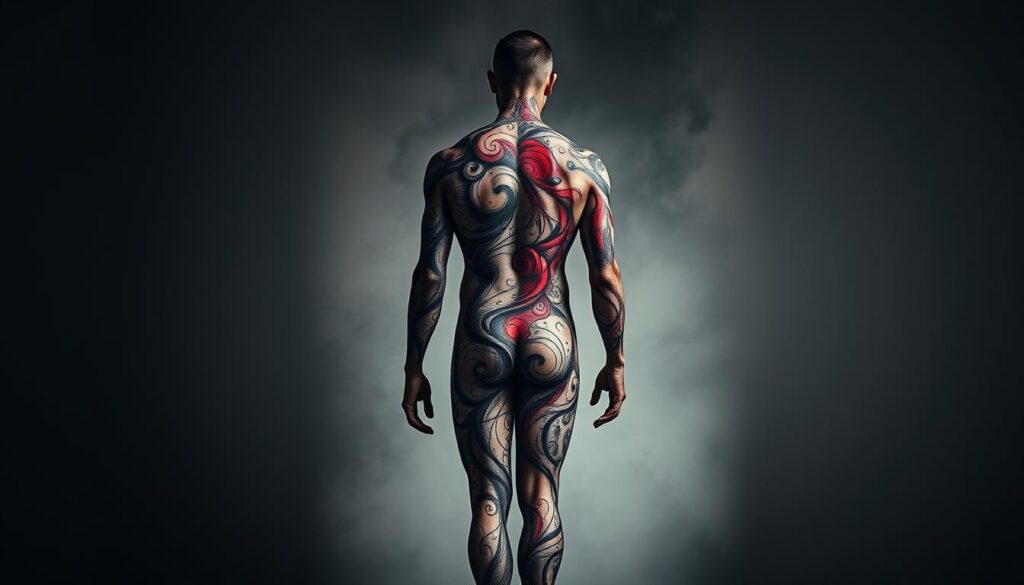
Ink isn’t just decoration—it’s a dialogue between your inner world and outer reality. Body art transforms fleeting thoughts into lasting visual statements, merging personal truth with creative craftsmanship. This fusion turns skin into a living exhibition space where emotions become tangible.
Designs That Tell a Story
Your tattoo might showcase a compass guiding you through life’s storms or a lotus blooming from muddy waters. These visual metaphors crystallize experiences too complex for words. A single design can hold graduation dates, cultural heritage symbols, and reminders of personal resilience.
Consider how symbols evolve with you. That initial rose design might gain new meaning after surviving hardship—its thorns now representing strength rather than pain. Every mark becomes a chapter in your ongoing story, etched where you’ll always see it.
The Role of Tattoo Artists in Shaping Identity
Skilled artists like those at Tiger Monkey Tattoo become translators of your vision. They transform vague ideas into cohesive wearable art, balancing technical precision with emotional insight. Their needles weave your memories into lines and shadows that breathe on skin.
This collaboration creates more than body decoration. It’s a shared journey where artists help articulate what you struggle to express. Their expertise ensures your statement remains timeless—a perfect blend of personal meaning and aesthetic mastery.
Social Influence, Perceptions, and the Impact on Identity
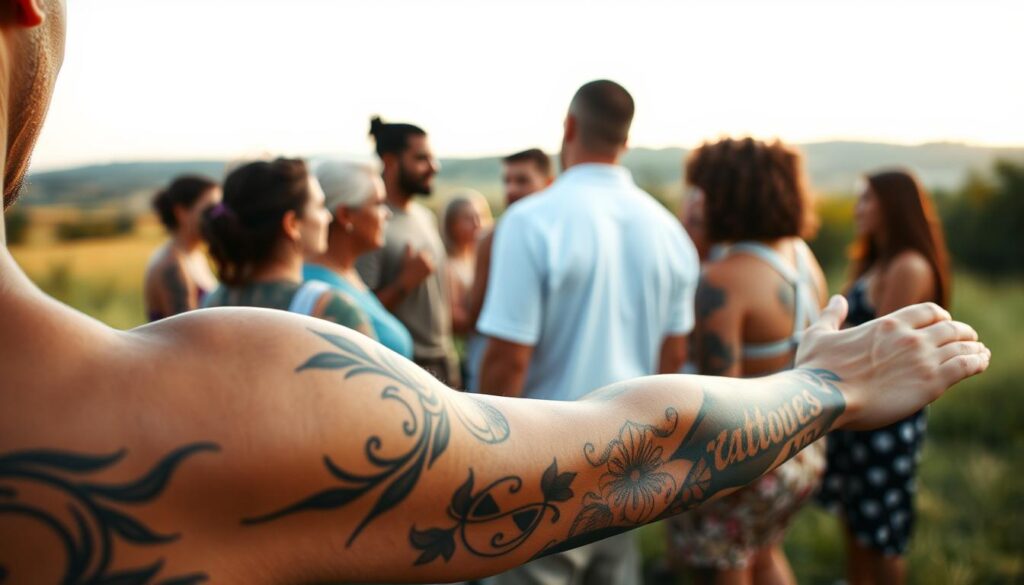
Your social circle might shape your ink choices more than you realize. While 78% of surveyed individuals lacked tattoos themselves, 74% reported friends with body art. This contrast reveals how peer networks normalize self-expression through skin.
Peer Influence and Societal Views
Generational gaps emerge starkly—92% of participants’ parents had no tattoos. Yet nearly half of respondents considered getting inked. One college student shared: “Seeing friends’ meaningful designs made me view body art as wearable courage.”
Public opinion tilts toward acceptance. 54% hold positive views about tattoos, while only 13% disapprove. Conditional perceptions thrive though—many approve only if designs align with workplace norms or carry clear symbolism.
| Age Group | Tattoo Approval Rate | Common Conditions |
|---|---|---|
| 18-25 | 81% | Artistic quality |
| 40+ | 43% | Discreet placement |
Balancing Professionalism and Individuality
Career considerations remain crucial. A marketing executive explained: “My forearm mandala stays hidden during client meetings—it’s my secret armor.” Industries like tech and arts increasingly embrace visible ink, while conservative fields still favor neutrality.
Your identity evolves through this dance between personal truth and social expectations. Each tattoo becomes a negotiated statement—part private meaning, part public conversation. As workplaces modernize, body art gains ground as legitimate self-expression.
Conclusion
Michael Biondi’s words ring true: “Our bodies were printed as blank pages to be filled with the ink of our hearts.” Your exploration of tattoo culture reveals how skin becomes a living journal—one where personal triumphs, losses, and growth take permanent shape. Each design bridges the gap between private meaning and public artistry.
The journey from 19th-century stigma to modern acceptance mirrors society’s embrace of individuality. What was once hidden now shines as a badge of resilience, with workplaces and families increasingly recognizing body art’s value. Cultural shifts prove self-expression outweighs outdated judgments.
Science confirms what many feel instinctively: ink choices often reflect emotional milestones. Therapeutic benefits emerge through creative control and biochemical responses, turning sessions into acts of empowerment. These marks don’t just decorate—they redefine narratives.
At Tiger Monkey Tattoo, we craft stories into skin with 15+ years of expertise. Ready to start your journey? Reach out at [email protected] or call (805) 441-5787. Let’s transform your vision into a wearable testament to who you are—and who you’re becoming.
